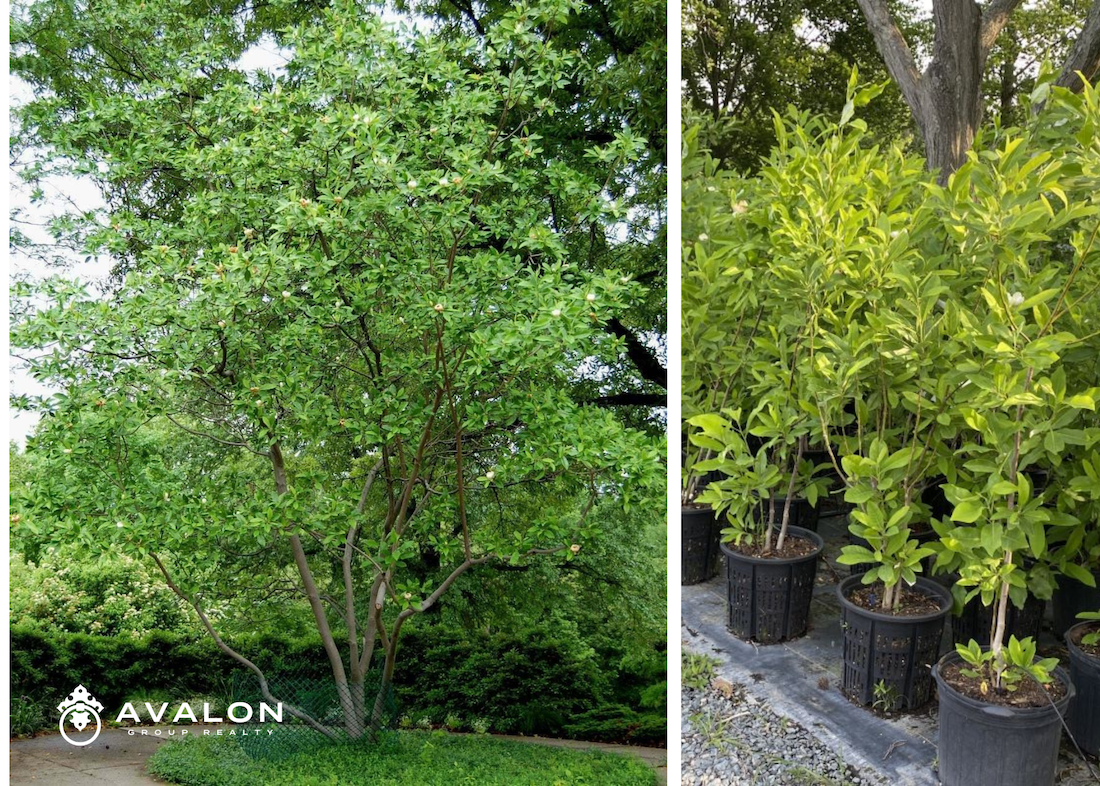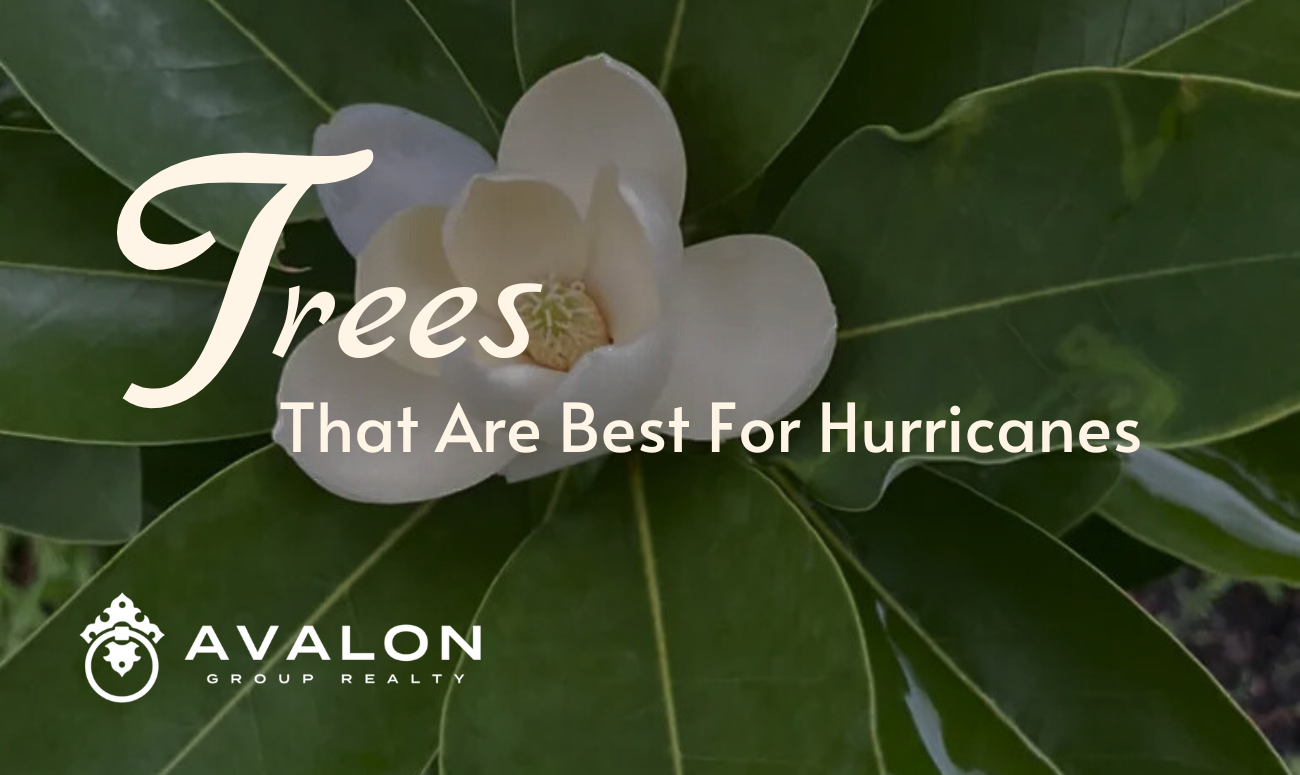Why Consider Trees That Are Best for Hurricanes?
Key Features of Hurricane-Resistant Trees
Strong Root Systems
Flexibility and Canopy Structure
Top Hurricane-Resistant Trees for Florida Landscapes
Live Oak (Quercus virginiana)
Southern Magnolia (Magnolia grandiflora)
Sabal Palm (Sabal palmetto)
Bald Cypress (Taxodium distichum)
Planting and Placement Tips for Storm Protection
Create Natural Windbreaks
Consider Soil and Maintenance
Avoid High-Risk Trees
Maintenance Tips to Enhance Tree Resilience
Prune Regularly
Inspect for Weak Spots
Beyond Tree Selection: A Comprehensive Approach to Storm-Safe Landscaping
Use Shrubs and Ground Covers as Additional Windbreaks
Sweetbay Magnolia
Background of the Sweetbay Magnolia
Description and Distinctive Features

We are planting 4 Sweetbay Magnolias in a grouping at our home that is being built.
Cultivars for Florida Gardens
Cultivation Tips for Sweetbay Magnolia
Potential Issues
Seasonal Interest and Year-Round Appeal
Adding Sweetbay Magnolia to Your St. Petersburg Home
Adding Sweetbay Magnolia trees in groupings of three or more can significantly enhance their ability to withstand strong winds, a vital feature for homes in hurricane-prone areas like St. Petersburg, FL. When planted together, these trees create a natural windbreak, reducing the impact of high-speed winds by dispersing their force among multiple trunks. This grouping effect, along with the Sweetbay Magnolia’s natural resistance to wind damage, helps to stabilize each tree, minimizing the risk of uprooting. Additionally, grouped plantings form a dense barrier that can shield surrounding plants and structures from debris, further contributing to a home’s hurricane resilience.
Another advantage of clustered Sweetbay Magnolias is their robust root systems, which interlock and support one another when planted in close proximity. This interconnected root network offers greater stability than single plantings, particularly in saturated soils common after heavy rains and hurricanes. Together, these attributes make the Sweetbay Magnolia an exceptional choice for hurricane-resistant landscaping that adds both beauty and functionality to a property.
Conclusion: Building a Storm-Resilient Landscape with Trees That Are Best for Hurricanes
Making Your Property Hurricane-Ready
“Trees that are best for hurricanes are an essential investment in your property’s future,” emphasizes Aaron Hunt. “They not only protect your home during storms but can significantly increase your property value.”
Ready to Storm-Proof Your Landscape?
As St. Petersburg’s trusted real estate experts, we at Avalon Group Realty understand that protecting your home starts from the ground up. Whether you’re buying a new property or enhancing your current one, making informed decisions about hurricane-resistant landscaping is crucial for long-term property protection.
Connect With Our Experts
For personalized guidance on hurricane-resistant properties in St. Petersburg or to learn more about homes with storm-hardy landscapes, reach out to our team:
Avalon Group Realty
- Website: www.AvalonGroupTampabay.com
- Phone: (727) 555-0123
- Email:[email protected]
Our experienced agents can help you:
- Evaluate existing landscaping during home buying
- Recommend local arborists and landscape professionals
- Assess property values with hurricane-resistant features
- Guide you through Florida’s specific landscaping requirements
Additional Resources
For more information about storm-hardy landscaping in St. Petersburg, we recommend:
- St. Petersburg Urban Forestry Division: 727-893-7373
- Florida Native Plant Society: www.fnps.org
- University of Florida IFAS Extension: www.sfyl.ifas.ufl.edu
Remember, when it comes to trees that are best for hurricanes, proper selection and maintenance are your best defense against storm damage. Contact Avalon Group Realty today to learn how we can help you protect your piece of paradise in St. Petersburg.
Follow us on social media for more property tips and updates:
- Facebook: https://www.facebook.com/AvalonGroupTampaBay/
- Instagram:https://www.instagram.com/avalongrouprealtors/
- Twitter: https://x.com/AVALONGROUPRE
- LinkedIn: https://www.linkedin.com/in/jhr/
- TikTok: https://www.tiktok.com/@avalongrouprealty
If you want to buy a Sweetbay Magnolia in St Petersburg, visit Willow Tree Nursery. Here is a map to Willow Tree:




